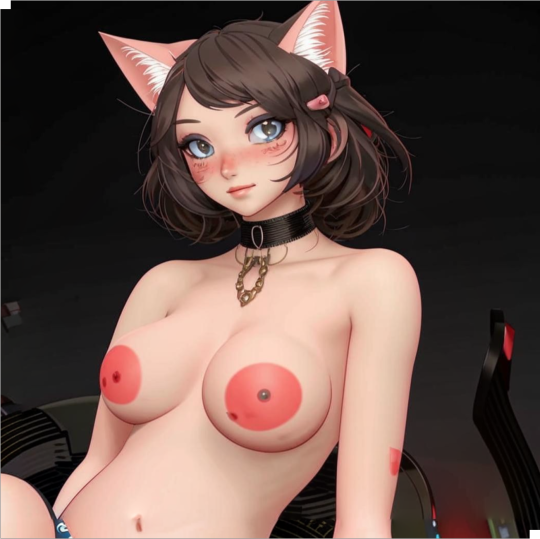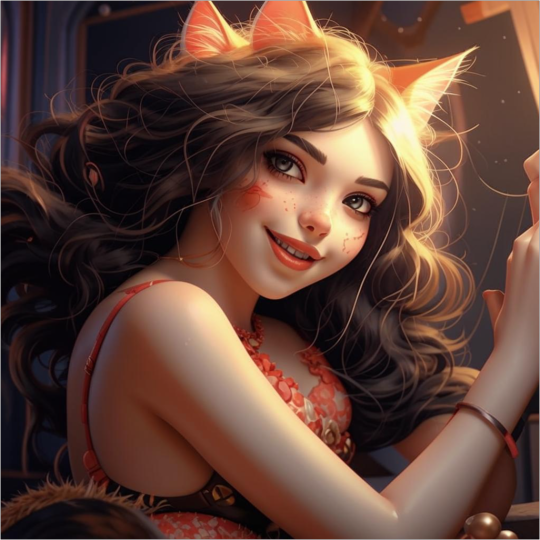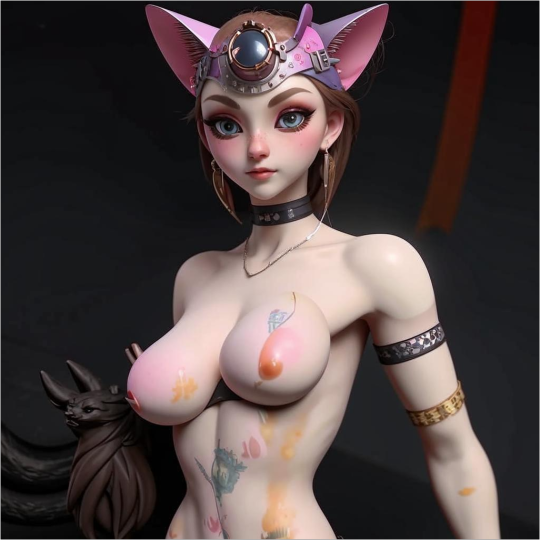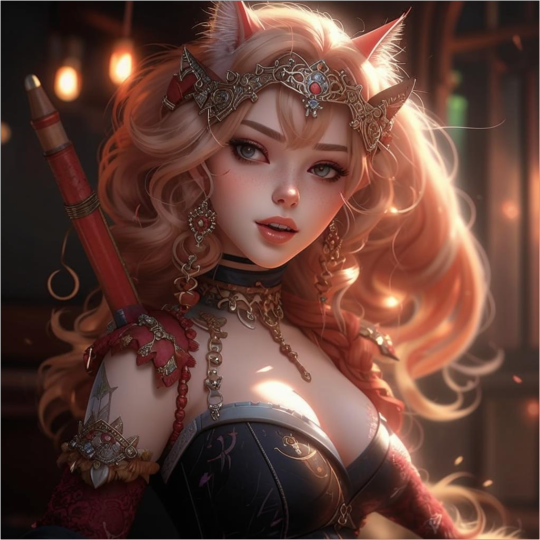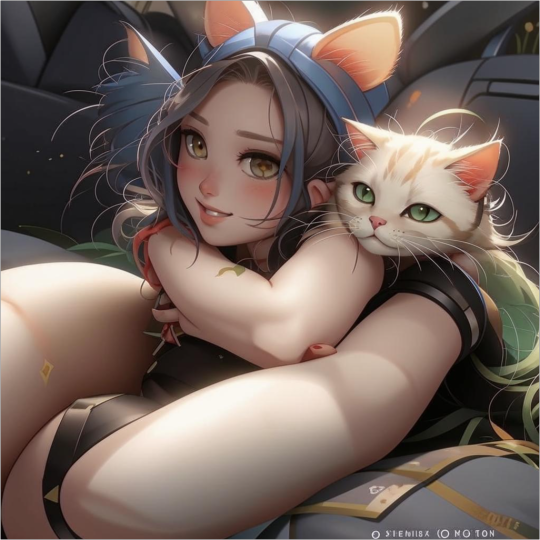Text
0 notes
Text
0 notes
Text
0 notes
Text
0 notes
Text
catgirls and doggirls
Sure! Here's a 1000-word piece exploring the concept, cultural background, and thematic elements of catgirls and doggirls in popular media:
Catgirls and Doggirls: A Dive into Kemonomimi Culture
In the vast landscape of anime, manga, and fantasy fiction, few character archetypes are as instantly recognizable—or as beloved—as catgirls (nekomimi) and doggirls (inumimi). These hybrid beings combine human traits with animal features such as ears, tails, and behaviors. Often whimsical and sometimes deeply symbolic, catgirls and doggirls have secured a prominent place in Japanese pop culture and have spread globally, influencing fan communities, cosplay, and storytelling traditions.
Origins of Kemonomimi
The Japanese term kemonomimi literally means "animal ears," and refers to characters who appear human but exhibit certain animalistic traits. This genre includes not only catgirls and doggirls but also foxgirls (kitsunemimi), bunny girls, and more. The idea of hybrid creatures has ancient roots, evident in mythologies across the world: Egyptian gods like Bastet (a feline-headed deity), shapeshifting fox spirits in Japanese folklore (kitsune), and werewolves in European tales all suggest a long-standing fascination with the boundary between human and animal.
However, the modern catgirl can be traced more directly to Japanese manga and anime of the 20th century. Osamu Tezuka’s Unico and the 1970s anime The Star of Cottonland, featuring anthropomorphic characters with animal features, helped plant the seed for what would become a staple in fantasy and slice-of-life genres. By the 1980s and 1990s, with titles like All Purpose Cultural Cat Girl Nuku Nuku and Hyper Police, catgirls had established themselves as fan favorites.
Doggirls followed a similar trajectory, though they typically appear less frequently than catgirls. Their personalities are often portrayed as loyal, energetic, and affectionate—characteristics stereotypically associated with dogs, providing a foil to the often aloof and mischievous nature of catgirls.
Catgirls: Grace, Mischief, and Independence
Catgirls embody a mixture of elegance, mystery, and playful defiance. Their feline features—pointed ears, slitted eyes, and swishing tails—are paired with personality traits often attributed to real cats: curiosity, aloofness, and sudden bursts of affection.
Why are catgirls so popular? One answer lies in their ambiguity. A catgirl may be seductive yet innocent, powerful yet emotionally vulnerable. This flexibility allows writers and artists to use catgirls in various genres, from romantic comedies to action fantasies. Characters like Felicia from Darkstalkers, Blake Belladonna from RWBY, and Aisha Clan-Clan from Outlaw Star show the wide range of how catgirls can be portrayed—from feral warriors to purring companions.
The appeal also ties into broader themes of transformation and identity. Catgirls are often used as metaphors for liminality—the space between wild and domestic, control and chaos, instinct and intellect. Their hybrid nature makes them especially compelling to audiences who find themselves navigating identities, adolescence, or outsider status.
Doggirls: Loyalty, Energy, and Heart
Doggirls are generally less common in media, but no less iconic. Their traits mirror those of dogs: friendliness, loyalty, protectiveness, and boundless enthusiasm. While catgirls are often portrayed as flirtatious or sly, doggirls are portrayed as earnest and dependable.
Characters like Inukai-san from Inu x Boku SS, or Inugami from Gugure! Kokkuri-san, often radiate warmth and devotion. Their personalities tend to be straightforward—they mean what they say and often act before thinking. This makes them ideal for stories that rely on emotional transparency or themes of unconditional friendship.
In many cases, doggirls play the role of the reliable sidekick or childhood friend who harbors a secret crush on the protagonist. Their wholesome energy contrasts with the mystique of catgirls, offering different flavors of appeal.
Symbolism and Cultural Meaning
In Japanese culture, animals are loaded with symbolism. Cats (especially the "maneki neko") are associated with luck, mystery, and independence. Dogs represent loyalty, protection, and honesty. When these symbols are transposed onto human characters, they carry those associations into the narrative.
Catgirls may be symbols of untamed femininity or mysterious allure, tapping into both ancient and modern archetypes of the enchantress or the loner. Doggirls, meanwhile, often emphasize connection, loyalty, and emotional stability, aligning with traditional ideals of companionship.
These archetypes also play into gender roles in media. Catgirls, with their teasing and elusive nature, sometimes embody the "tsundere" (cold on the outside, warm on the inside) trope. Doggirls may reflect the "genki girl" type—cheerful, sporty, and straightforward.
However, modern interpretations frequently challenge these binaries. New media and fan works often subvert expectations, portraying shy doggirls or intellectual catgirls, reflecting a growing desire for nuanced characters beyond cliché.
The Role of Fandom and Cosplay
Part of what has made catgirls and doggirls so enduring is their visual appeal. The simple addition of animal ears and tails can dramatically alter a character's design, making them instantly recognizable and distinct. This has led to a massive presence in cosplay communities, where fans embrace the opportunity to mix animal features with fashion, creativity, and personal expression.
Platforms like DeviantArt, Pixiv, and Twitter are filled with original kemonomimi characters. VTubers—virtual YouTubers using animated avatars—often incorporate catgirl or doggirl traits into their designs to enhance cuteness and fan appeal. One example is Inugami Korone, a Hololive VTuber who blends high-energy positivity with dog-themed humor and aesthetics.
Fandom has also taken the concept into adult-themed territories, exploring the sensual or erotic potential of animalistic traits. The idea of heightened senses, instinctual behaviors, and submissive or dominant tendencies lends itself to explorations of power dynamics and fantasy in adult storytelling. As always, the use of anthropomorphic traits in fiction can be both playful and provocative.
Psychological and Philosophical Dimensions
On a deeper level, the fascination with catgirls and doggirls can reflect a yearning for a return to nature—or at least a reconnection with instinctual selves. In a world increasingly mediated by technology, rules, and artificiality, characters who blend human and animal characteristics remind audiences of the primal and the playful.
They can also serve as metaphors for otherness, hybridity, and belonging. Characters who are "not quite human" may resonate with those who feel alienated or liminal in their own lives—be it due to gender identity, neurodivergence, or cultural dissonance.
Conclusion
Catgirls and doggirls are far more than cute character designs; they are reflections of cultural myths, storytelling archetypes, and emotional desires. Whether embodying mischief and charm or devotion and energy, these kemonomimi characters allow artists and audiences to explore identity, instinct, and fantasy in vivid, creative ways.
Their staying power lies not only in their visual appeal but in the flexibility of their meaning. As media continues to evolve and audiences demand more diverse and complex characters, we can expect the world of catgirls and doggirls to keep expanding—tail swishing and ears twitching all the while.
Let me know if you'd like this expanded with specific character examples, a focus on Western interpretations, or turned into a blog or script format!
1 note
·
View note

